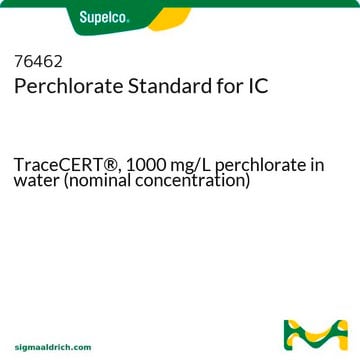86896
Tetrabutylammonium tetrafluoroborate
for electrochemical analysis, ≥99.0%
About This Item
Productos recomendados
grade
for electrochemical analysis
Quality Level
assay
≥99.0% (T)
≥99.0%
form
crystals
mp
155-161 °C (lit.)
159-162 °C
solubility
methanol: 0.1 g/mL, clear, colorless
SMILES string
F[B-](F)(F)F.CCCC[N+](CCCC)(CCCC)CCCC
InChI
1S/C16H36N.BF4/c1-5-9-13-17(14-10-6-2,15-11-7-3)16-12-8-4;2-1(3,4)5/h5-16H2,1-4H3;/q+1;-1
InChI key
NNZZSJSQYOFZAM-UHFFFAOYSA-N
¿Está buscando productos similares? Visita Guía de comparación de productos
Categorías relacionadas
General description
Application
signalword
Danger
hcodes
Hazard Classifications
Acute Tox. 4 Oral - Eye Dam. 1 - Skin Irrit. 2 - STOT SE 3
target_organs
Respiratory system
Storage Class
11 - Combustible Solids
wgk_germany
WGK 3
flash_point_f
No data available
flash_point_c
No data available
ppe
dust mask type N95 (US), Eyeshields, Gloves
Choose from one of the most recent versions:
¿Ya tiene este producto?
Encuentre la documentación para los productos que ha comprado recientemente en la Biblioteca de documentos.
Los clientes también vieron
Nuestro equipo de científicos tiene experiencia en todas las áreas de investigación: Ciencias de la vida, Ciencia de los materiales, Síntesis química, Cromatografía, Analítica y muchas otras.
Póngase en contacto con el Servicio técnico








